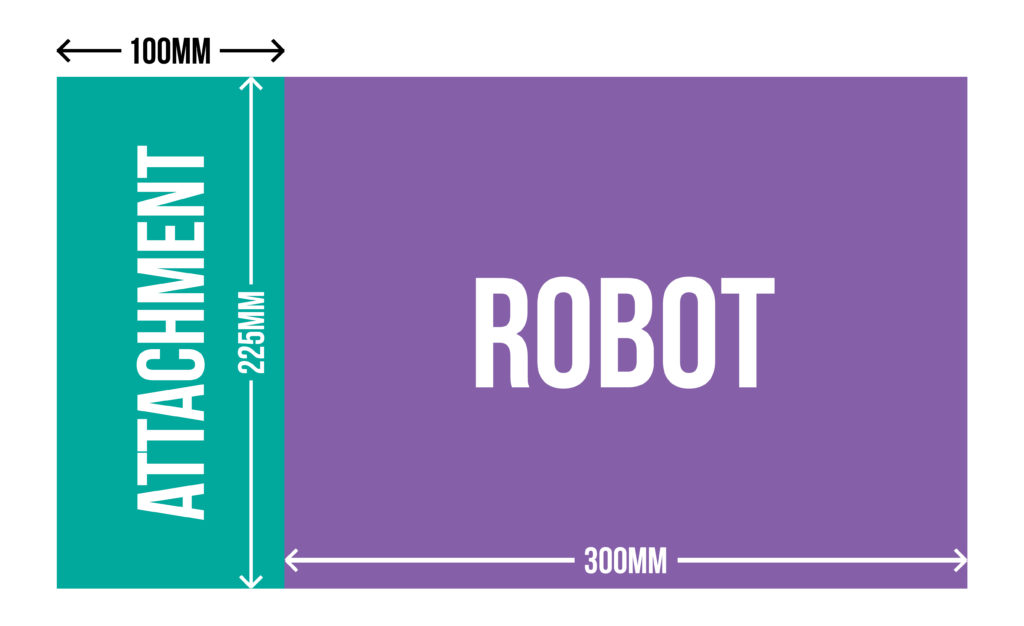Please read these rules thoroughly. Some rules have changed since last year.
- All robots must have an operational Raspberry Pi at their core which carries out the majority of the computing effort.
- Other boards, such as an Arduino or other microcontroller, may be used on the robot but the Pi must be in overall control.
- An additional piece of equipment e.g. a games controller, a laptop, mobile phone or tablet may be used to control the robot, but must not be physically attached.
- All robots must be powered by batteries and must not require mains power for anything except charging battery packs.
- No airborne robots are permitted, e.g. drones. Walking and self-balancing robots are permitted.
- The main chassis, including wheels and protrusions, of competing robots must fit within a 225mm x 300mm footprint (but see the note on attachments below which allows for slightly more length)
- The maximum width of the robot as it drives forward should be 225mm.
- The maximum length of the robot as it drives forward should be 300mm (but see 7.2 below for additional length).
- It is permitted to add and remove components from your robot during the course of the competition in order to tailor it to individual challenges.
- The basic chassis, Pi and controller arrangement should remain the same.
- The attachments must not add more than 225mm x 100mm to the robot. The maximum size of the robot with attachments can, therefore, be 225mm x 400mm.
- Please see the diagram below for an illustration of robot sizing.

- There will be a number of different challenges into which you may enter your robot, the results of which will contribute to an overall score. Points structures will be published by Pi Wars to ensure that teams are aware of how many points each challenge is potentially worth.
- None of the challenges are mandatory.
- No points will be earned from challenges not entered.
- There may be some physical requirements for specific challenges – please consult the individual challenge pages for more information.
- Robots will be allocated to a category based on the team that constructed them. The categories are as follows:
- Schools and other kids clubs.
- Beginner roboteers.
- Intermediate roboteers.
- Advanced/Professional roboteers.
- Teams will be asked at the time of application into which category they should be entered. The final decision on category rests with Pi Wars in consultation with the robot team.
- Robots will compete and be ranked against other robots in the same category.
- Under-18 competitors will need to be accompanied by a responsible adult.
- If LiPo batteries are used, any charging must be done inside a fire-proof bag, available from many places that stock the batteries, such as HobbyKing. This is to ensure we don’t have any accidents.